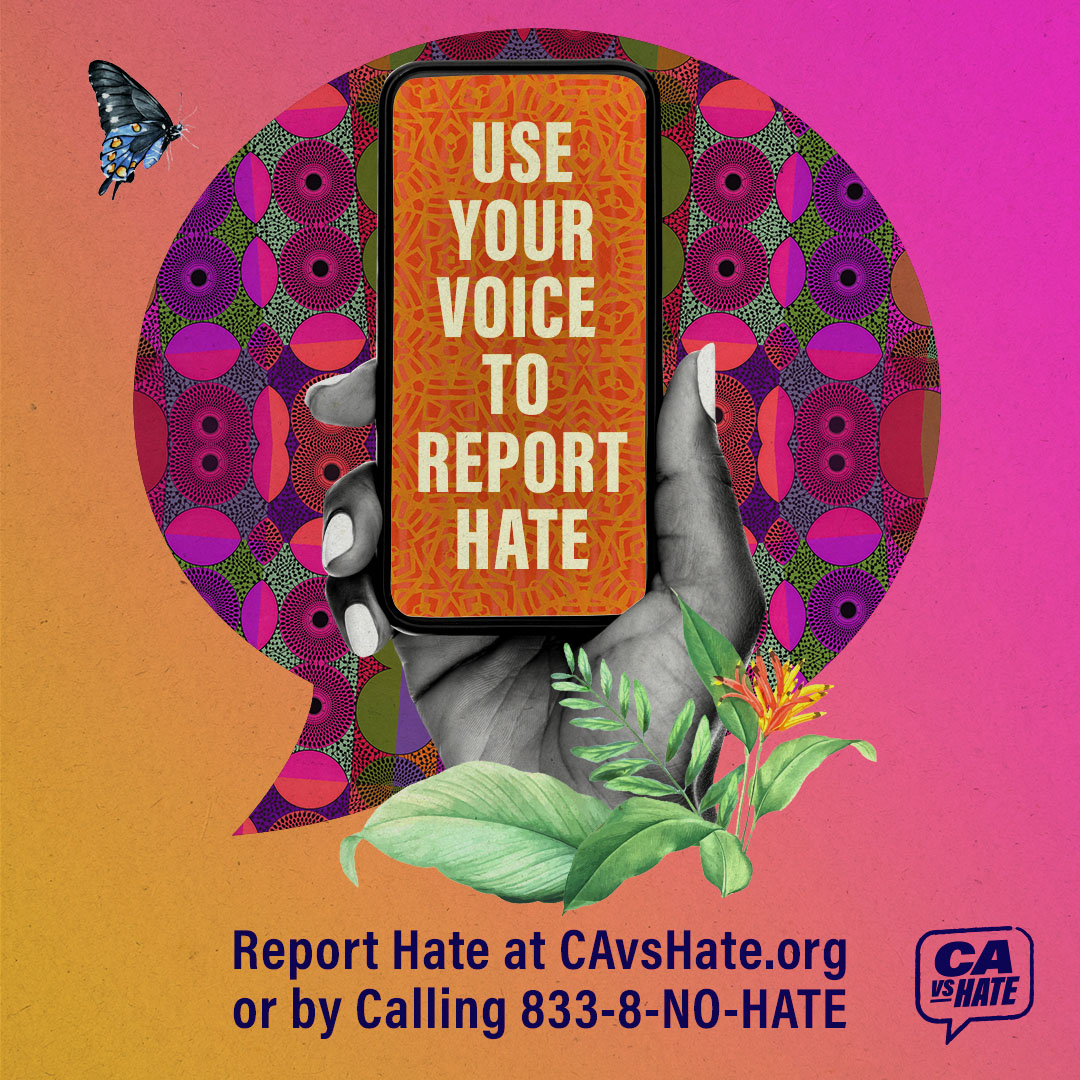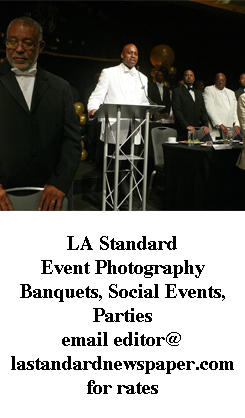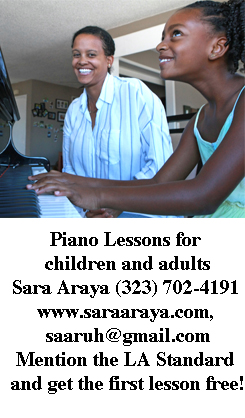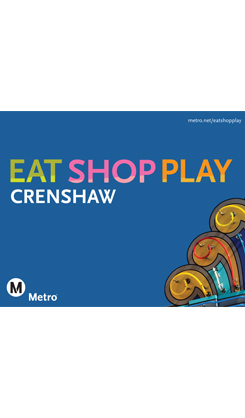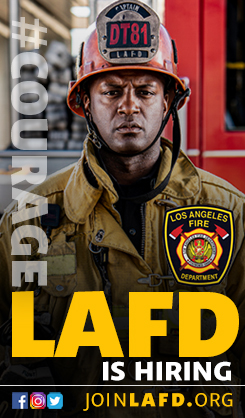The exhibit in Leimert Park features local Black photographers Jeff Lewis (sports), Zay Monae (community portraits and events), Bexx Francois (Kamala Harris presidential campaign), and David Mesfin (Black surfers), and Destination Crenshaw’s Faces of Black LA series.
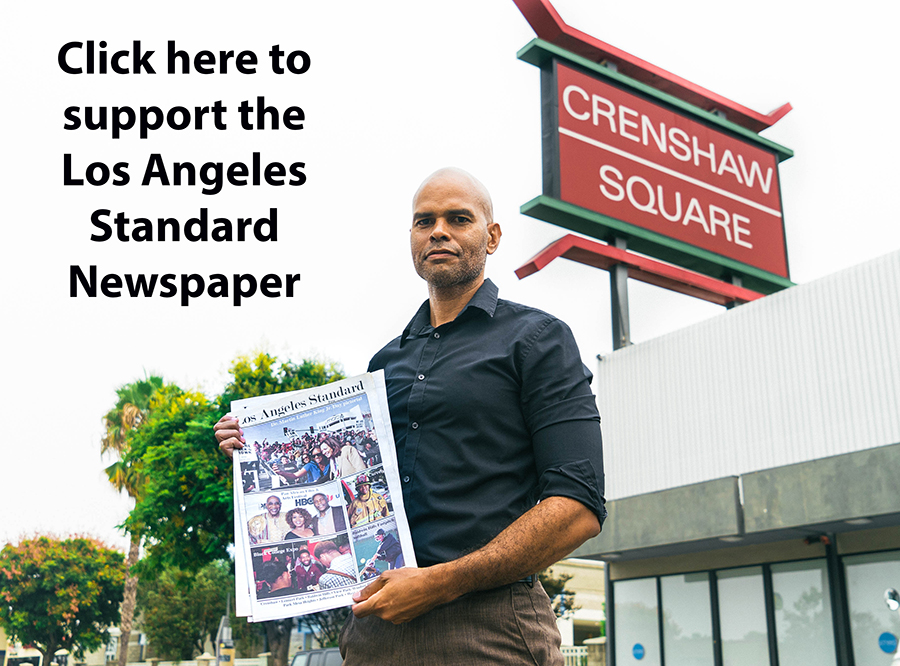
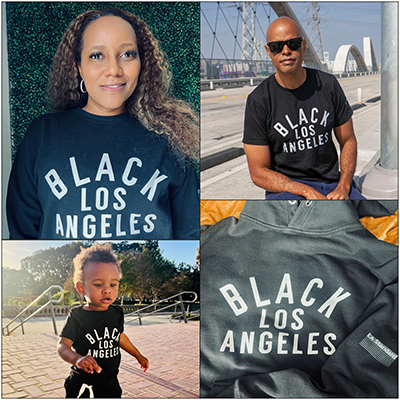

The Black Los Angeles Photography Exhibit will celebrate the amazing work of Black photographers, with an emphasis on photographers who work in Los Angeles.
“I personally know a lot of great Black photographers here in the Los Angeles area, and I see some amazing work from Los Angeles based Black photographers online all of the time,” said Jason Lewis, Owner and Publisher of the Los Angeles Standard Newspaper. “I figured that having a location for them to showcase their work would be awesome.”
The Black Los Angeles Photography Exhibit is part of the Los Angeles Standard Newspaper Foundation, a 501c3 nonprofit organization, and is presented at the Los Angeles Standard Newspaper’s office in Leimert Park. The office is located at 2415 W. Martin Luther King Jr. Boulevard, which is one block west of Arlington Avenue. In the near future there will be classes in photography, writing, video, layout production, and other aspects of content creation for print and online media.
Lewis, who worked at Our Weekly Newspaper and the Los Angeles Sentinel Newspaper as a sports writer, sports photographer, and editor, before launching the Los Angeles Standard Newspaper, has always emphasized photography to accompany the articles that he wrote.
“When I was at the other publications, I always wanted them to run the pictures bigger because it makes the page look good and it sucks people into reading the articles,” he said. “Every page of a newspaper should be a piece of art, but seeing a sea of words isn’t visually appealing to the eye. When I started the Standard, I made sure that I emphasized photography.”
Lewis has always been a fan of big pictures, so most of the photographs in the Black Los Angeles Photography Exhibit are 20 inch by 30 inch enlargements.

“The typical 8 x 10 inch photograph is kind of boring,” Lewis said. "I want to fill up these walls with large images of Black people.”
Lewis also believes that these images can change the perception of how people view Black people who live in inner cities.
“I’ve seen a lot of photographers come into Black communities of Los Angeles and other inner city Black communities around the nation and look for the gritty picture,” he said. “They look for struggle and strife because it makes for bold images. They look for gang members and poverty. They’re looking for a negative narrative that while it does exist in Black communities, it should not define Black communities. I’ve lived in the greater Crenshaw area for the majority of my life. I’ve lived in areas that are defined by the film Boyz N the Hood. I’ve experienced way more positive things here than negative things. My experiences here are more in-line with Issa Rae’s Insecure TV show than with gangster movies. I cross paths with everyday positive people on a daily basis. That positive narrative typically is not shown in mainstream media, but Black photographers and other creators showcase positive narratives of Black communities often in their work. Their work is important because it can change the perspective as to how Black people are viewed.”
Through the Standard, Lewis started the Los Angeles Standard Newspaper Camera Club, which is a free monthly club that has a mix of professionals and hobbyists. The photography exhibit is another way to showcase great photography work in Los Angeles’ Black community.
“Over the years I’ve had many great Black photographers be guest presenters at the camera club meetings,” he said. “They showcase their work, talk about how they learned photography, their style of photography, and the ins and outs of their careers. The camera club group members get a lot out of their presentations, so now I’m trying to get their work to a larger audience.”
Lewis is showcasing different genres of photography with the exhibit, and he plans on rotating new photographers in either quarterly or biannually.
The opening reception for the exhibit will be held in late March. Follow the L.A. Standard’s Facebook and Instagram pages for more details. To schedule a viewing of the exhibit, email This email address is being protected from spambots. You need JavaScript enabled to view it..
Zay Monae

Monae captures the true spirit of Black people in Los Angeles. Many of her photograhs feature people smiling and having a great time. She has shot many festivals, and she has the 85mil series where she does portrait shoots with locals.
“I drive to their house and I try to capture their essence in about five to ten minutes,” she said. “I’ll do like 15 people in one route.”
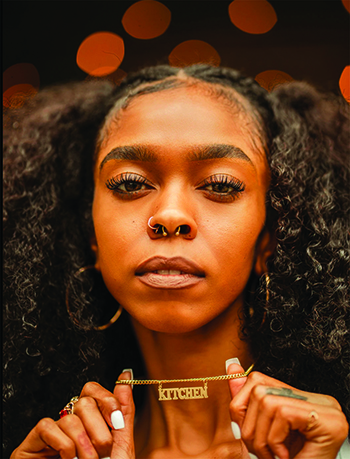
The shots are simple but impactful at the same time. Monae fills the frame of her shot with her subject, and she uses a plain background, or she blurs the background so all of the attention is focused on the subject. There is nothing in the image that takes the viewer’s eyes away from the person being photographed, and Monae has a way of capturing positive emotions.
Through this project Monae has gotten to know a lot of people from her community who she probably would not have crossed paths with, and she’s helping them tell their story.
“I came across this one individual who grows plants in her garden in South Central,” she said. “She teaches people how to grow their own garden. She calls herself the Plant Plug because she likes to connect people with plants and tell them how they can grow their own plants in their own backyard.”
Monae became interested in photography while she was a student at Gardena High School. She started off shooting small events like champagne parties and baby showers. She went on to attend Cal State Dominguez Hills, where she earned a degree in digital media. She learned a lot of her photography skills and techniques online by doing Google searches and watching YouTube videos.
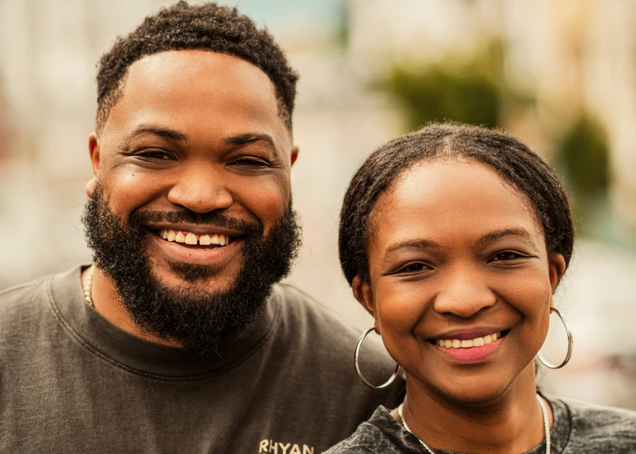
The 85mil series is named after her go-to lens, which is 85 mm. She’s currently shooting with a Sony A7R3, and she shoots all of her portraits at f/1.4. She prefers to shoot on overcast days to avoid shadows, and on sunny days she typically uses open shade. Doing quick photoshoots has taught her to refine her skills and adjust quickly.
“It’s taught me how to use my camera very efficiently,” Monae said. “Learning to trouble shoot, and also to make do with whatever the conditions are. Because sometimes it will be a very gloomy day, which is what I prefer so that I’m not shooting with such hard lighting.”
Monae took a recent trip to Costa Rica, where she continued her 85mil series.
“I’m mainly focused on the Afro-Caribbean culture, so that people know that when you think Costa Rica, you should also be thinking about that Black folks here,” she said. “I think that’s something that’s overlooked, even with the amount of Black people who live out here. The last guy that I photographed is in his mid 60s. He was talking about how there’s a lot of gentrification happening in the Caribbean. He said that sometimes it’s good, but sometimes they’re racist, but it’s something that they have to kind of embrace as this point.”
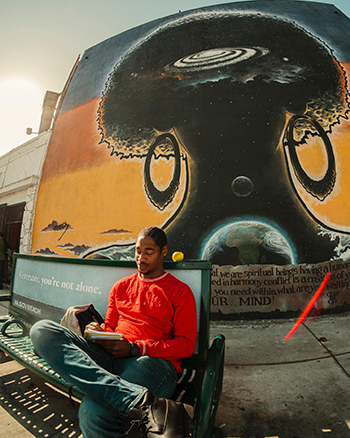
Monae also shoots events such as the Black Market Flea at the BeeHive, the Ebony Beach Club, and festivals in Leimert Park. She captures unique images by using a fish-eye lens.
“I shoot very wide, and that’s one of my styles when I shoot events,” she said. “I like to exaggerate the limbs, the arms, the movement, and the energy. I like to emphasize the sun because I think that there’s a connection with the sun. The sun symbolizes energy, and that’s something that is really what my art is about. How it makes me feel, and how it makes the person feel.”
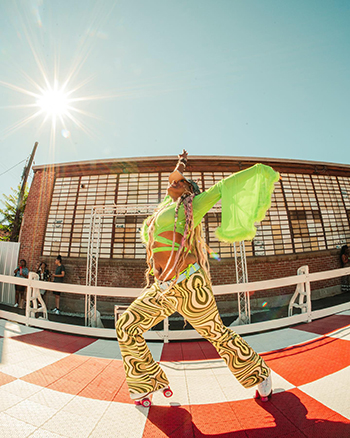
Monae’s work can be viewed at www.zaymonae.com and follow her on social media.
Jeff Lewis

Sports and photography have been a passion for Jeff Lewis since he was a child growing up in Lafayette Square, which is near Crenshaw Boulevard and Washington Boulevard. He played Little League Baseball, winning an MVP award, at Rancho Cienaga Sports Complex. He played football at Fairfax High School, and lined up opposite Keyshawn Johnson on West L.A.’s football team. He later went on to run track at UC Irvine. Sports has been in his blood for years.

When he was progressing through his athletic career, he was also developing his photography skills, which has done him well since he moved away from playing sports, and starting shooting them. After working for local newspapers, shooting high school sports led him to shooting major college and professional teams, such as the Lakers, Clippers, Dodgers, UCLA, USC, and other major sporting events in Los Angeles.
Lewis networked his way into a job with the Associated Press, which took him to new heights in his career.
“Every time somebody gave me a chance I made the best of it,” he said. “I shot every event as if it was the last time I was going to be there. If you keep on doing that you’ll be successful and you’ll achieve your goals.”


Lewis’ photos have appeared in major publications such as Sports Illustrated, ESPN the Magazine, and the Los Angeles Times. He was named the 2006 Los Angeles Dodgers Photographer of the Year, and while working for the NFL Network, his photographs where shown on television during the game, which had never happened before with any photographer. He shot Kobe Bryant’s 81-point game and Game 7 of the 2010 NBA Finals when the Lakers defeated the Celtics. The most memorable sporting event that he has shot was the Super Bowl, which he shoots yearly.
“The Super Bowl is the biggest stage in sports, and I was front and center for the biggest game,” he said.

There had been rumors for a few years that the Rams might be returning to Los Angeles, and Lewis saw that as an opportunity to break into the NFL.
“I tracked them coming back to L.A. for several years before they made the move,” he said. “Once they came, and they needed a team photographer, I put a plan in motion.
“I networked with a bunch of people that know people with the Rams. People who would know what’s going on. I did research and figured out who the P.R. director was, and I met him a couple times on the road. I even met the mayor of Inglewood to figure out when the Rams were moving. I used my connections with the Associated Press so that I could have the heads up on everything with the move. I figured out who the old team photographer was and if he was going to make the move.”
After being placed on a short list of photographers who were given a tryout, Lewis was able to earn a spot on the team, and his first assignment brought back some fond memories. The Rams training camp was at his alma mater, UC Irvine, and his room was in the same dorm that he lived in while attending the university.
Being hired by the Rams put Lewis in an interesting position. He grew up a San Francisco 49ers fan, and has made many road trips to shoot his favorite team, including when they played in the Super Bowl against the Baltimore Ravens. But career comes first, so he has given up his favorite team.
“This is considerably different from being a fan,” he said. “Instead of buying paraphernalia and spending money, and investing time as a fan, I’m getting paid for my time for being around. I almost equate it to being back in high school, where you have a vested interest in the place that you go to school. I have an interest in the Rams doing well because I’m a part of the team. Being a fan of any other team gets trumped by something like that. I’m very passionate about the sport, and I want to see us be successful.”


Lewis has moved on from the Rams as he travels around the NFL shooting games in different cities.

To view more of Lewis’ work, visit www.jefflewisphotography.com, and follow him on social media.
Bexx Francois

Francois is a Haitian-American photographer who is based in Los Angeles. She was a photographer on the Joe Biden/Kamala Harris 2020 presidential campaign, and also on the Kamala Harris/Tim Walz 2024 presidential campaign.
Francois’ media career has always involved storytelling, and she has a keen eye for the quiet moments, as can be seen in her photographs of Harris as she flew from city to city meeting different people as she campaigned to become the President of the United States.

Francois moved to Los Angeles from New York City, and she described the differences.
“I realized how much texture and story exists in New York; the noise, congestion, the foot traffic, the characters, the everything’s open late, music blasting from the speakers of cars, the buildings, the canopied blocks of Brooklyn, the ‘AYO!s,’ she said. “And not to say any of that doesn’t exist in L.A., but in NYC, all of that is right up against you. L.A. affords you space. Which is extremely valuable, if you use it correctly.”

With Francois’ photography work on the Harris campaign, one composition rule that is prominently used in a very intriguing way is the use of negative space. She has photographs of Harris that have wide open spaces, but the spaces are empty, so it is not distracting to the subject of the photograph, which is Harris. They viewer’s eyes are drawn directly to the subject. Negative space can make or break a photograph depending how it is used, and in Francois’ pictures, she uses that space correctly and in a profound way that is pleasing to the eye.
Based on her experience working on the Harris campaign, Francois is looking to travel the world as a photojournalist.
“Working with Kamala Harris on both of her campaigns spoiled me,” she said. “At one point I was on the road for 21 days straight, living out of a carry-on suitcase. We visited five cities in one day. And I loved every part of it. Trying to find the story as the places and people around us changed quickly was both challenging and thrilling.”

Outside of Harris’ campaign, Francois has done editorial and commercial work, and her client list includes Nike, Adidas, Red Table Talk, Marie Claire, LeBron James’ The Springhill Company, HBO, and GQ. She has done set photography and her images are featured throughout LeBron James’ The Shop’s coffee book.
View more of Francois’ work on her website, www.bexxfrancois.com.
David Mesfin

David Mesfin used his photography and filmmaking skills to tackle a longstanding stereotype about African Americans. That Black people cannot swim, which unfortunately has more truth than myth to it. Along the way Mesfin documented Black surfers as they recaptured their stolen legacy, which led him to creating the documentary “Wade in the Water: A Journey into Black Surfing and Aquatic Culture.”
“I come from Africa, from Ethiopia, and I arrived here in the 1980s,” Mesfin said. “People were saying that Black people don’t swim. And I’m like, ‘Where does that come from?’ It made no sense to me. I lived in a country where everybody swam. We had the Nile River.”

During segregation Black people were denied access to many beaches and also to public swimming pools around the nation, including here in Southern California, so a high percentage of Black people did not have the opportunity to learn how to swim. This was a dramatic shift from what their ancestors along the western shores of Africa experienced, where swimming and water activities such as surfing were a way of life. Mesfin has done extensive research on the history of Black people surfing in Africa and in the U.S., which led him to creating the documentary “Wade in the Water: A Journey into Black Surfing and Aquatic Culture.”
“The documentary looks into the 1,000-year history of surfing from Senegal to Angola, and also the connection between Africa, and African American surfers in the Americas,” he said. “I came across the quote that Professor Kevin Dawson wrote that a thousand years back, surfing independently was developed from Senegal to Angola. That was really the tipping point for me to begin the project. Through the research I found some interesting stories about Africa, and also individuals and organizations in Southern California about surf culture there (Africa) and here.”

Historically in the United States, Black people have not been prominent on the surfing scene, but Mesfin’s photography and documentary shows that West Africans and Africans who were enslaved in the Americas were known for their swimming abilities.
“With surfing, the first written account of surfing was 1640 (in Africa),” he said. “And the first account of surfing in Hawaii was in 1776. When the Portuguese were working their way through the west coast of West Africa, a German traveler who was traveling with them ended up writing about seeing a mother teaching her children how to surf. He saw a woman strapping her kids on a shortboard and throwing them into the water and they were catching waves. That was the first account. It’s important that we celebrate that, that the first account of surfing was in Africa. But then again the history, which goes back 1,000 years, for Africans to learn to use kayaks to go over these waves, they used what was called surf canoes. Surf canoes existed 1,000 years back, so if surf canoes existed, that means surfing existed.
“Through the Middle Passage as Africans came into the Americas, there are stories in the Caribbean where the slavers found out that the Africans were great divers, and that they could hold their breath for a long time. One of the things that they discovered was that they could use them to dive and retrieve sunken gold from the Spaniards. The only people who could retrieve it were the Africans. In current day, all of that gold could amount to trillions of dollars.”
Mesfin named his documentary after the spiritual “Wade in the Water,” which is associated with the Underground Railroad. Enslaved Black people who were escaping to northern states were told to use rivers and the ocean so that the dogs could not pick up their scent. The fight for freedom during slavery turned into a fight for equality after the Civil War. During segregation and the Civil Rights Movement, Black people had to fight for basic rights, which included the right to beaches and public swimming pools.

“As African Americans fought back for the right to use pools and the ocean they held demonstrations, like the 1964 demonstration in St. Augustine, Florida that was led by Martin Luther King, Jr.,” Mesfin said. “Those demonstrations were called ‘wade-ins.’ They would go to the beach and the pool and they’d stand. Wading was a very important part of the African-American experience. The oceans and rivers were used to demonstrate for our rights. Now, with Black Lives Matter, we’re reconnecting with the ocean.”
Mesfin’s documentary features Dr. Alison Jefferson, who has done extensive research on Black people being denied access to beaches and other leisure sites in the Los Angeles area. Surfer Tony Corley, who created the first Black surfers association in 1974 is featured. And the documentary touches on the difficulties that Black surfers have had in more recent years, several decades beyond the Civil Rights Movement.
“The thing about surfing is that it was a territorial sport,” Mesfin said. “Surfers are in their own surfing culture. They are, not all, but some are very aggressive. In context of African Americans, it is quite scary to be out in the water and you’re one against 40 White dudes. So you have to be careful about where you go out and who you surf with; unless they see you out there out in the water often.”
With the rise of the modern social justice movement, many Black surfing organizations have been created, with several of them being in the Los Angeles area.
“The younger generations have come up post-Black Lives Matter with groups such as Black Surfers Collective (@blacksurferscollective), Color the Water (@colorthewater._), So Fly Surf School (@soflysurfschool), and Ebony Beach Club (@ebonybeachclub),” Mesfin said. “We have some in Northern California. Black.Surfers (@black.surfers). There are so many organizations that are being created.”

The Black Surfers Collective hosts free monthly surfing classes at the Inkwell in Santa Monica, which was one of the few beaches accessible to Black people during segregation. Ebony Beach Club hosts a monthly “Beach Bounce” which features surfing lessons and music. Also Intrsxtn Surf (@intrsxtn_surf), a surfing group for women of color, hosts events at local beaches. In September at the Huntington Beach Pier is the annual ‘A Great Day in the Stoke’. It is one of the largest gatherings of Black surfers in Southern California. For more information follow @agreatdayinthestoke on Instagram.
For more information on “Wade in the Water: A Journey into Black Surfing and Aquatic Culture,” visit www.wadeinthewaterproject.com
Destination Crenshaw's Faces of Black L.A.


The Crenshaw District is the cradle of Black American creativity. The joy, strength, and struggle that is rooted in this neighborhood is portrayed in various forms of art. To showcase the amazing work that Black residents of this community have contributed to Los Angeles and to the nation, Destination Crenshaw is creating an unapologetically Black project that will include community spaces, murals, sculptures, world-class landscaping and architecture, and artistic programming.
Destination Crenshaw is a reparative development project that will be the largest Black public art project in the U.S. and quite possibly the world.


Destination Crenshaw is funding commissions for more than 100 Black artists. One of the art projects that Destination Crenshaw is partnering with is the Black Los Angeles Photography Exhibit. Destination Crenshaw created the feature the Faces of Black L.A., which was published on their social media pages. They featured Black residents from the Crenshaw District who are making an impact in their career fields. The portraits from that feature will be featured at the Black Los Angeles Photography Exhibit.
For more information about Destination Crenshaw, visit www.destinationcrenshaw.la.



